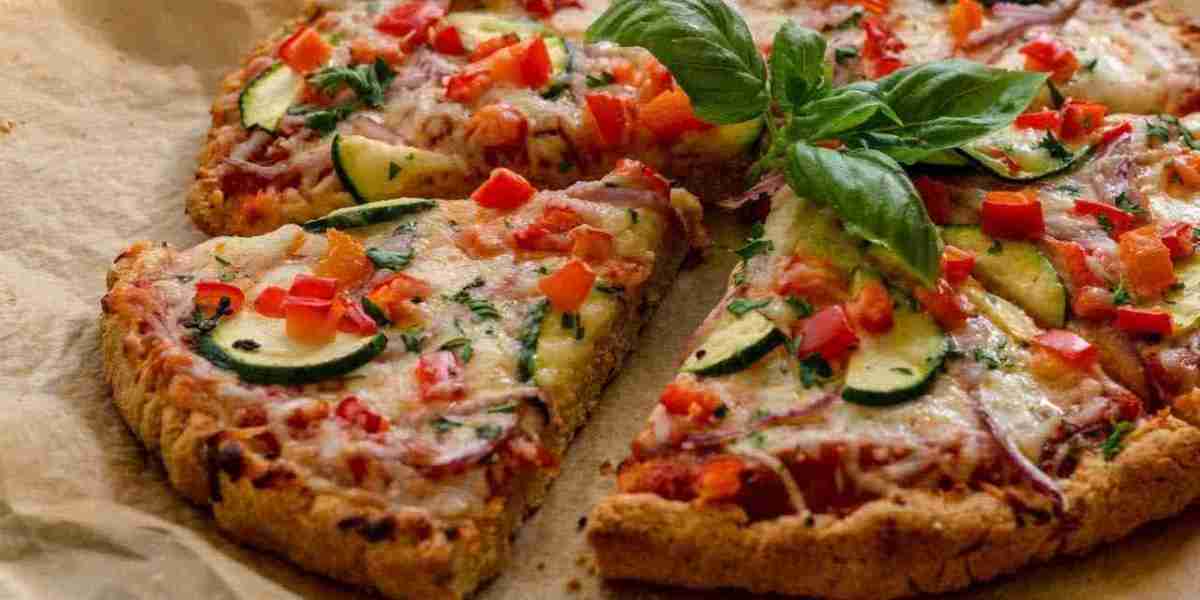The growing prevalence of gluten intolerance, celiac disease, and lifestyle-driven dietary choices has made gluten-free offerings a necessity in the foodservice industry. From independent pizzerias and modern cafes to school cafeterias and corporate catering services, food establishments are actively integrating gluten-free pizza crusts into their menus. This shift has played a vital role in expanding the Gluten-free Pizza Crust Market, opening up new B2B revenue channels beyond retail shelves.
This article explores how gluten-free pizza crusts are being adopted across various foodservice formats, the challenges of operational integration, and the evolving consumer expectations that drive demand in this segment.
The Rise of Gluten-Free in Foodservice
Several factors contribute to the increasing demand for gluten-free pizza crusts in foodservice environments:
Health awareness: More consumers seek gluten-free options, whether due to celiac disease or perceived health benefits.
Dietary inclusivity: Foodservice providers strive to accommodate a broader range of dietary needs.
Competitive differentiation: Offering gluten-free pizzas helps brands stand out in a saturated market.
Consumer loyalty: Customers with dietary restrictions tend to be loyal to restaurants that meet their needs.
As a result, gluten-free pizza crusts are no longer a niche offering—they’re becoming a standard menu item in many establishments.
Key Foodservice Segments Adopting Gluten-free Pizza Crusts
1. Pizzerias and Fast-Casual Restaurants
Many major pizza chains (e.g., Domino’s, Papa John’s, Pizza Hut) now offer gluten-free crust options.
Fast-casual brands like Blaze Pizza, MOD Pizza, and Pieology let customers customize gluten-free pizzas with various toppings.
2. Cafes and Health-Focused Eateries
Trendy cafes and organic restaurants often feature gluten-free, vegan, or paleo pizza crusts made from cauliflower, almond flour, or cassava.
3. Institutional Catering
Schools, colleges, hospitals, and corporate cafeterias increasingly require gluten-free offerings to comply with allergen management and diversity in meal planning.
Government and institutional contracts often now specify gluten-free inclusivity as part of health standards.
4. Hotels and Hospitality Chains
Hotel buffets and room service menus now include gluten-free pizza as part of health-conscious options, particularly in premium and wellness-themed resorts.
Popular Crust Types in Foodservice
The gluten-free crusts used in foodservice tend to focus on ease of handling, durability, and storage. Common types include:
Frozen pre-baked crusts: Require minimal prep time and reduce cross-contamination risks.
Par-baked crusts: Offer flexibility for different oven types (conveyor, wood-fired, etc.).
Plant-based crusts: Cauliflower, broccoli, sweet potato, and quinoa varieties cater to broader health trends.
Benefits for Foodservice Operators
Expanded customer base: Restaurants can attract gluten-sensitive and health-conscious consumers.
Menu innovation: Chefs use gluten-free crusts to create gourmet or specialty pizzas.
Revenue boost: Gluten-free items are often priced slightly higher, improving profit margins.
Challenges in Foodservice Integration
Despite its benefits, offering gluten-free pizza crusts comes with several challenges:
A. Cross-Contamination Risks
Shared ovens, utensils, or surfaces can compromise gluten-free integrity.
Strict protocols are needed for safe preparation, which may require training and operational changes.
B. Storage and Handling
Gluten-free crusts may have shorter shelf lives, require refrigeration/freezing, or be more fragile than traditional doughs.
C. Ingredient Sourcing
Restaurants need reliable suppliers who can provide certified gluten-free crusts that meet labeling and allergen compliance standards.
D. Staff Education
Foodservice staff must be trained to understand:
What gluten is
How to prevent cross-contact
How to communicate gluten-free assurances to customers
Strategies for Success in Foodservice
To succeed in the gluten-free pizza crust segment, foodservice businesses must:
Use certified gluten-free suppliers to build trust.
Implement separate prep areas, tools, and packaging for gluten-free items.
Display clear menu labeling and allergen warnings.
Offer pre-made crusts to simplify preparation and reduce contamination.
Promote gluten-free options via digital menus, social media, and health-oriented branding.
Leading Brands Supplying Foodservice
Several gluten-free pizza crust brands supply directly to foodservice institutions:
Caulipower: Offers bulk frozen cauliflower crusts for commercial use.
Smart Flour Foods: Known for its foodservice-sized gluten-free pizza crusts.
Rich’s Foodservice: Provides pre-made, certified crusts for QSRs and institutions.
Kinnikinnick Foods: Supplies allergen-free, gluten-free options to schools and hospitals.
The Outlook for Gluten-Free Pizza in Foodservice
As consumer preferences evolve, gluten-free pizza crusts will continue to gain traction in foodservice. Key trends to watch include:
Vegan-gluten-free hybrid crusts
Smaller, individual crusts for customizable or grab-and-go options
Global flavor integrations (e.g., crusts with turmeric, sesame, or Mediterranean herbs)
Sustainably packaged crusts for environmentally conscious diners
Conclusion
The integration of gluten-free pizza crusts into foodservice menus has transformed from a novelty into a necessity. As the Gluten-free Pizza Crust Market matures, restaurants, cafes, and institutional caterers that prioritize safety, flavor, and quality in their gluten-free offerings will enjoy enhanced customer loyalty, brand reputation, and competitive edge.




